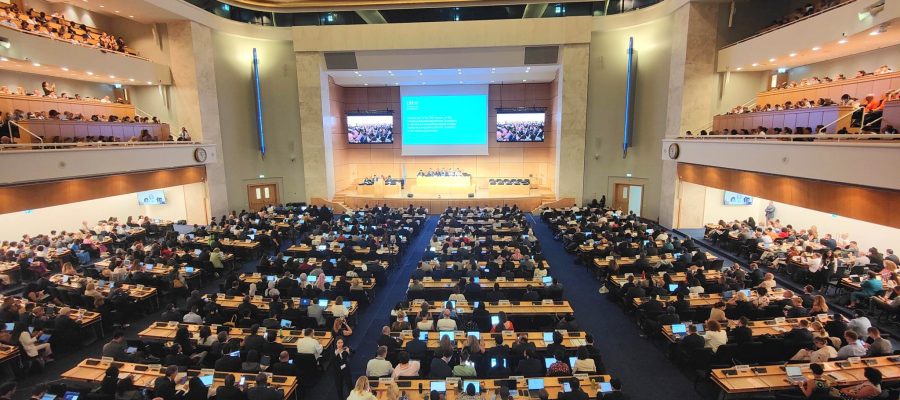The circular economy is a concept that advocates for plastic packaging products to be kept in use and out of the environment. Since plastics are not biodegradable, we have to make sure they remain in use and not disposed in water, land or even burnt, causing environmental pollution.
The challenge however comes with the amount of plastics that are produced, used and discarded every day. Especially in the Food & Beverage industry, plastics are an affordable option for businesses and are seen as convenient containers to eat on-the-go within the busy metropolitan cities.
The 2021 SMEP plastic factsheet by UNCTAD reports that 966,000Tons of plastic waste is collected yearly in Kenya, and 13.26% of this waste is of plastic beverage bottles collected from beaches. The reports further states that the plastic items collected in large shares were food wrappers, plastic lids, takeaway containers among others.
The repercussions of careless plastics disposal are a polluted environment, clogged drainage systems and even worse long-term effects to our environment.
A circular economy for plastics helps to highlight how we can ensure best practice and use necessary plastics responsibly. Circular economy promotes recycling of existing plastics, designing of recyclable plastics for repeated use, and methods of getting the used plastic to recyclers. The following are some social and economic benefits and opportunities that can be identified within a circular economy.
- Entrepreneurship Opportunities Emerging in Sustainable Packaging Design, Waste separation, Recycling Services
Whenever problems arise, there’s bound to be opportunities too. The plastic menace has created opportunities for packaging designers, waste managers and entrepreneurs to identify and execute.
Sustainable manufacturing practices can be easier for an existing packaging manufacturer, than a startup to adopt. Existing manufacturers can easily change their practice into a sustainable one and meet the demand for recyclable products.
In plastic packaging design, the challenge is to produce easily recyclable packages. Designers can ensure to follow recycling design guiding principles, for example WRAP’s recyclability guidelines to create easily recyclable products. Design guidelines help manufacturers produce plastic packaging that is not easily contaminated during the recycling process. Some of these design guidelines include using fewer different plastic polymers, avoiding use of nonrecyclable labeling, adhesives and colour additives.
-
- Durable Products
Since plastic alternatives are designed to be used and reused, they have to be made of quality material. This comes down to a single product being reused by one person rather than several plastic packaging products used only once, by one person. Reusable products also tend to be more costly than single use plastics so the owner would want to take care of it. The advantage is that it is a one-time cost product that helps save money and reduce the amount of potential plastic waste in the environment.
-
- Innovation: Demand for alternative packaging material forcing creativity
Creating plastic alternatives that serve the same purpose and are affordable to manufacture takes a highly innovative mind. Plastics came to be popular because of their flexibility, affordable manufacturing process and easily sourced raw material. However, this created the pollution problem due to irresponsible disposing and the difficulty for companies to follow through on waste management.
Raw material for plastic alternatives is usually difficult to source and costlier to mass produce hence packaging industries, especially the food & Beverage, have not fully adopted to them. However, herein lies opportunities for the entrepreneurs who can find a way to source and make this raw material affordable for manufacturers. Some plastic alternatives especially used in the food & Beverage industry can be paper straws/cups/plates, cocoanut husk plates, wooden utensils etc.
-
- Reduced Carbon Emissions
Carbon emissions occur when a carbon compound such as carbon dioxide is released to the atmosphere through burning of fossil fuel such as coal or gas. Plastic polymers such as HDPE, PET and PVC are made of fossil fuel hence when burned produce carbon emission. The less plastics end up in landfill and compost pits, the less plastic is burned and the less carbon emissions released into the atmosphere.
Carbon emissions promote climate change, leading to more extreme weather such as heat waves and bringing in discomfort and a higher risk of respiratory diseases among humans.
-
- Efficiency Mindset
Reusing items helps us cultivate an efficiency mindset. The linear method of consumption promotes a wasteful and irresponsible mindset. We rarely bother to find out where the used straw and cup of fresh juice we throw away goes once we are done with it. However, once we invest in a reusable bottle and start carrying it around, we become more mindful. One could also consider buying household items in bulk rather than having too many small, single-use containers at home.
Summary
Promoting circular economy in plastics leads to real-world benefits such as a clean environment and unclogged drainage systems. Further benefits include entrepreneurial opportunities in waste management and innovative technology advancements, which create much needed employment. Since plastic waste sorting and separation is a simple exercise, we can start small at home and the impact will be immediately noticeable in our environment.

